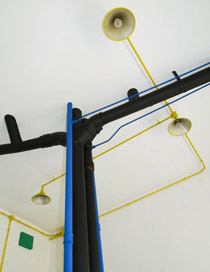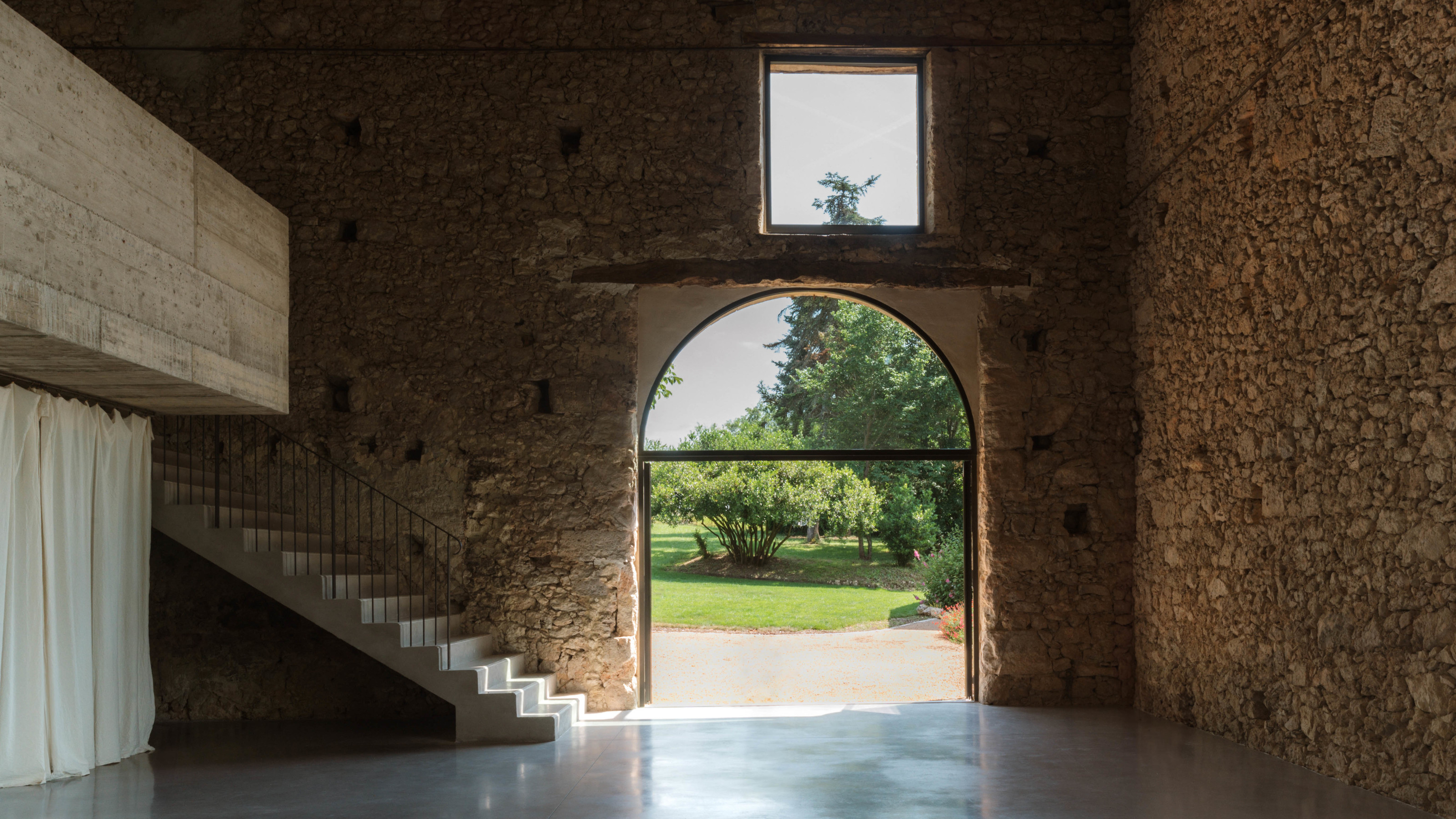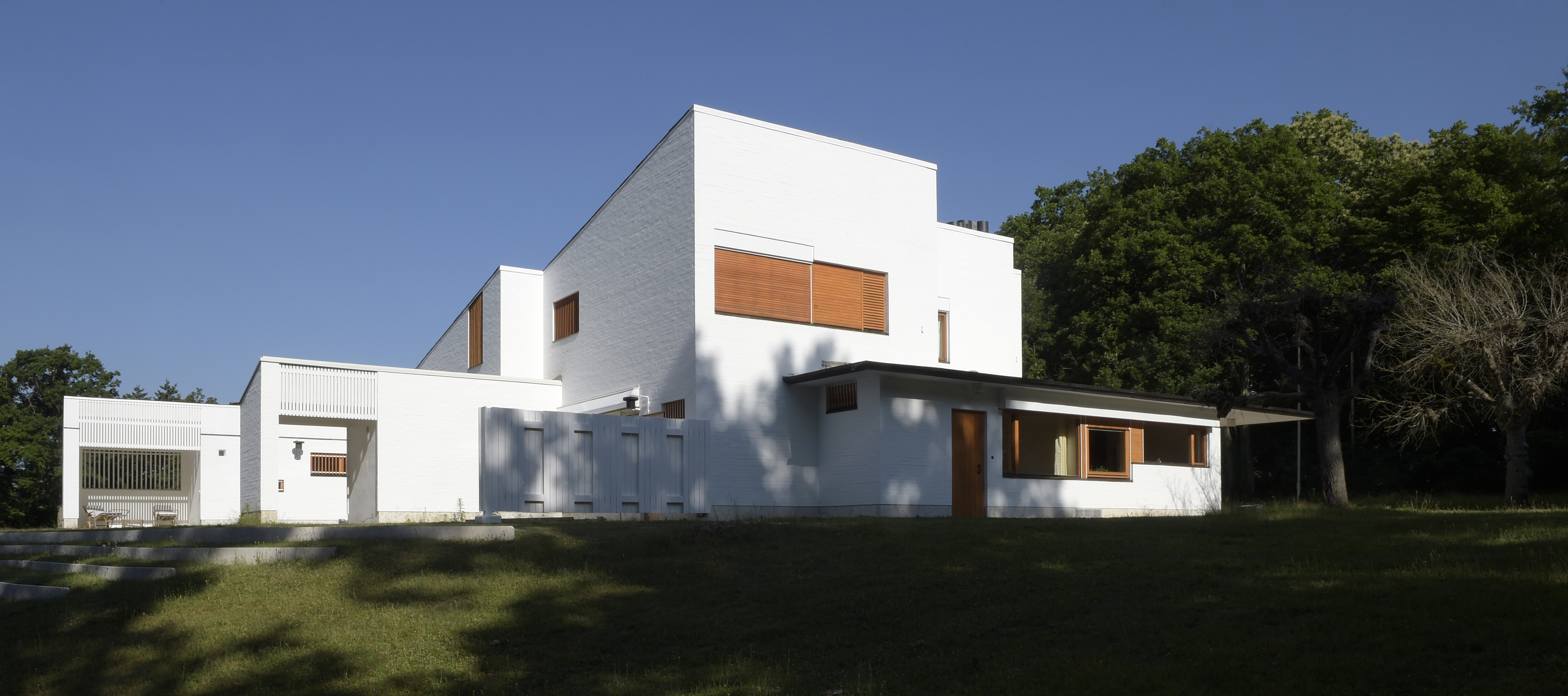Le Corbusier's Claude & Duval factory, France

While Modernist architecture revelled in dreams of machine-living and functional industrial-like aesthetics, there are today only few examples of industrial Modernist typology still standing. One of the most important of them all, Le Corbusier’s Claude & Duval factory in St-Die-des-Vosges was built in 1952 and has been a working textile factory ever since. Claude & Duval produces today high fashion pieces for the likes of Balenciaga, Chanel, Celine and Belgian designer Ann Demeulemeester, who owns her own Le Corbusier designed house in Antwerp.

After a fire during the Second World War destroyed the original factory, along with a big part of the city of St Die, Le Corbusier was invited by owner Jean-Jacques Duval to create a new urban plan for the city as well as a new design for the factory. The Modernist master’s urban plans may have never been realised, but the factory received a full redesign by Le Corbusier, who modernised the facilities and manufacturing process to provide plenty of space and natural light for the workers.
The factory, a true architectural gem, was designed according to the famous Le Corbusier modular system, also featuring his intense block colour experimentations, covering ceilings and walls, to the plumbing system, contrasting heavily the naked concrete used as the main material.
The workshops, based mainly on the second and third floors, resemble more an artist’s studio than a working industrial space, due to the abundant light and colours, while the fourth floor, hosts the company offices and meeting rooms. Special attention was paid to the interiors, which had to be open and bright, facilitating circulation of people and distribution of goods, while the centrally placed open workspaces could easily be supervised by the also centrally located offices above.
'The factory was being built when I was born, so in a way we grew up together,' says Remi Duval, the factory’s current CEO and Le Corbusier’s own godson. 'It was reborn from its ashes and the main construction guidelines were defined by Le Corbusier and my parents,' he adds, about his father’s bold scheme to modernise the factory. Since he took over from his father in running the factory in 1982, a few restoration works had to be done on the building, including maintaining the colours and the concrete brise soleils.
Respectful to his father’s work and Le Corbusier’s legacy, Duval is committed to preserving this historic architectural monument: 'Today, I think that the factory is exactly how Le Corbusier wanted it to be. This company is 102 years old but it still retains the same values and remains a largely unchanged family business.'
Receive our daily digest of inspiration, escapism and design stories from around the world direct to your inbox.
Ellie Stathaki is the Architecture & Environment Director at Wallpaper*. She trained as an architect at the Aristotle University of Thessaloniki in Greece and studied architectural history at the Bartlett in London. Now an established journalist, she has been a member of the Wallpaper* team since 2006, visiting buildings across the globe and interviewing leading architects such as Tadao Ando and Rem Koolhaas. Ellie has also taken part in judging panels, moderated events, curated shows and contributed in books, such as The Contemporary House (Thames & Hudson, 2018), Glenn Sestig Architecture Diary (2020) and House London (2022).
-
 The Bombardier Global 8000 flies faster and higher to make the most of your time in the air
The Bombardier Global 8000 flies faster and higher to make the most of your time in the airA wellness machine with wings: Bombardier’s new Global 8000 isn’t quite a spa in the sky, but the Canadian manufacturer reckons its flagship business jet will give your health a boost
-
 A former fisherman’s cottage in Brittany is transformed by a new timber extension
A former fisherman’s cottage in Brittany is transformed by a new timber extensionParis-based architects A-platz have woven new elements into the stone fabric of this traditional Breton cottage
-
 New York's members-only boom shows no sign of stopping – and it's about to get even more niche
New York's members-only boom shows no sign of stopping – and it's about to get even more nicheFrom bathing clubs to listening bars, gatekeeping is back in a big way. Here's what's driving the wave of exclusivity
-
 This modernist home, designed by a disciple of Le Corbusier, is on the market
This modernist home, designed by a disciple of Le Corbusier, is on the marketAndré Wogenscky was a long-time collaborator and chief assistant of Le Corbusier; he built this home, a case study for post-war modernism, in 1957
-
 ‘You have to be courageous and experimental’: inside Fondation Cartier’s new home
‘You have to be courageous and experimental’: inside Fondation Cartier’s new homeFondation Cartier pour l'art contemporain in Paris invites us into its new home, a movable feast expertly designed by Jean Nouvel
-
 A wellness retreat in south-west France blends rural charm with contemporary concrete
A wellness retreat in south-west France blends rural charm with contemporary concreteBindloss Dawes has completed the Amassa Retreat in Gascony, restoring and upgrading an ancient barn with sensitive modern updates to create a serene yoga studio
-
 The Architecture Edit: Wallpaper’s houses of the month
The Architecture Edit: Wallpaper’s houses of the monthThis September, Wallpaper highlighted a striking mix of architecture – from iconic modernist homes newly up for sale to the dramatic transformation of a crumbling Scottish cottage. These are the projects that caught our eye
-
 Explore the new Hermès workshop, a building designed for 'things that are not to be rushed'
Explore the new Hermès workshop, a building designed for 'things that are not to be rushed'In France, a new Hermès workshop for leather goods in the hamlet of L'Isle-d'Espagnac was conceived for taking things slow, flying the flag for the brand's craft-based approach
-
 ‘Landscape architecture is the queen of science’: Emanuele Coccia in conversation with Bas Smets
‘Landscape architecture is the queen of science’: Emanuele Coccia in conversation with Bas SmetsItalian philosopher Emanuele Coccia meets Belgian landscape architect Bas Smets to discuss nature, cities and ‘biospheric thinking’
-
 An apartment is for sale within Cité Radieuse, Le Corbusier’s iconic brutalist landmark
An apartment is for sale within Cité Radieuse, Le Corbusier’s iconic brutalist landmarkOnce a radical experiment in urban living, Cité Radieuse remains a beacon of brutalist architecture. Now, a coveted duplex within its walls has come on the market
-
 Maison Louis Carré, the only Alvar Aalto house in France, reopens after restoration
Maison Louis Carré, the only Alvar Aalto house in France, reopens after restorationDesigned by the modernist architect in the 1950s as the home of art dealer Louis Carré, the newly restored property is now open to visit again – take our tour